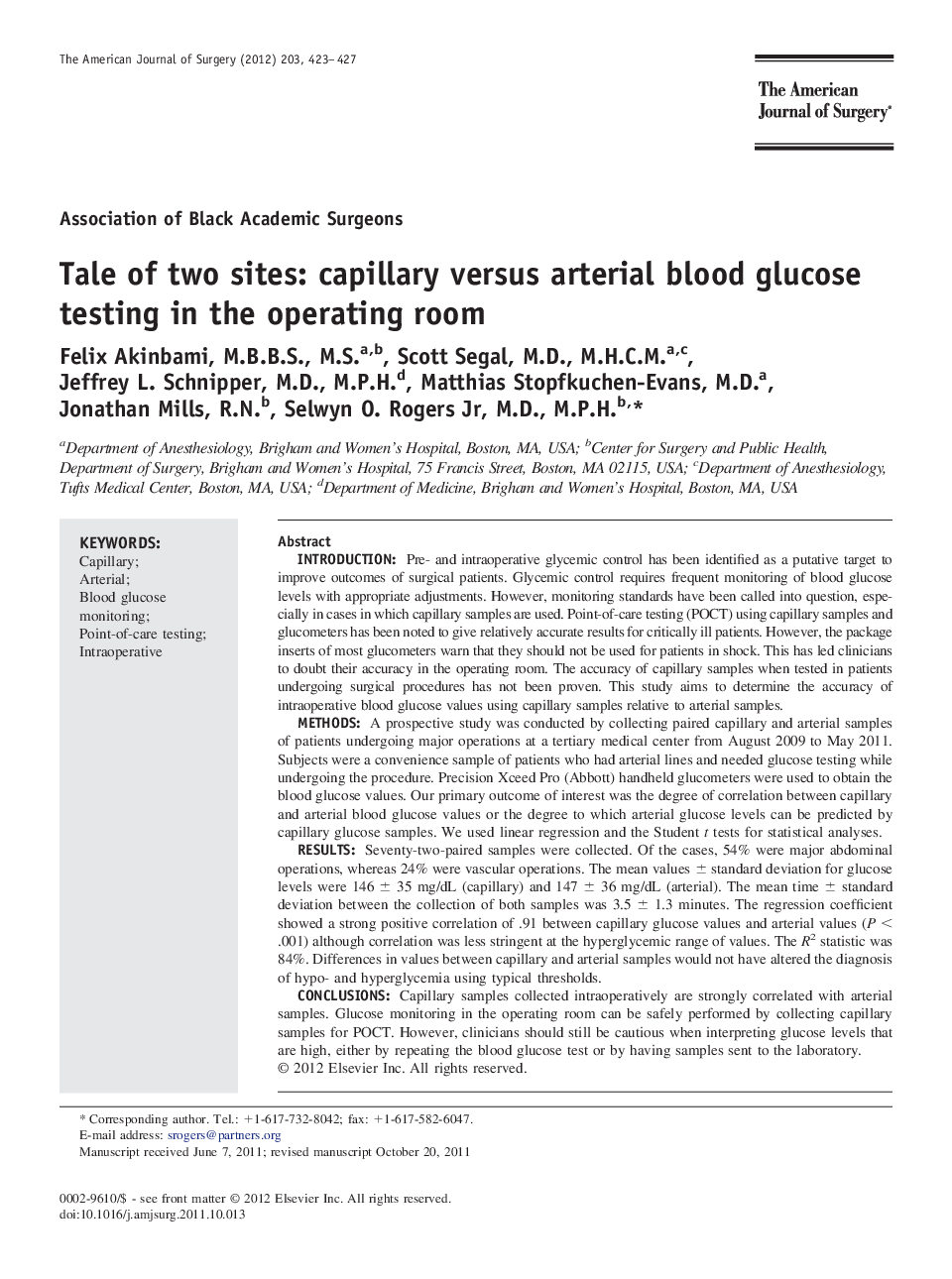| کد مقاله | کد نشریه | سال انتشار | مقاله انگلیسی | نسخه تمام متن |
|---|---|---|---|---|
| 4279979 | 1611532 | 2012 | 5 صفحه PDF | دانلود رایگان |

IntroductionPre- and intraoperative glycemic control has been identified as a putative target to improve outcomes of surgical patients. Glycemic control requires frequent monitoring of blood glucose levels with appropriate adjustments. However, monitoring standards have been called into question, especially in cases in which capillary samples are used. Point-of-care testing (POCT) using capillary samples and glucometers has been noted to give relatively accurate results for critically ill patients. However, the package inserts of most glucometers warn that they should not be used for patients in shock. This has led clinicians to doubt their accuracy in the operating room. The accuracy of capillary samples when tested in patients undergoing surgical procedures has not been proven. This study aims to determine the accuracy of intraoperative blood glucose values using capillary samples relative to arterial samples.MethodsA prospective study was conducted by collecting paired capillary and arterial samples of patients undergoing major operations at a tertiary medical center from August 2009 to May 2011. Subjects were a convenience sample of patients who had arterial lines and needed glucose testing while undergoing the procedure. Precision Xceed Pro (Abbott) handheld glucometers were used to obtain the blood glucose values. Our primary outcome of interest was the degree of correlation between capillary and arterial blood glucose values or the degree to which arterial glucose levels can be predicted by capillary glucose samples. We used linear regression and the Student t tests for statistical analyses.ResultsSeventy-two-paired samples were collected. Of the cases, 54% were major abdominal operations, whereas 24% were vascular operations. The mean values ± standard deviation for glucose levels were 146 ± 35 mg/dL (capillary) and 147 ± 36 mg/dL (arterial). The mean time ± standard deviation between the collection of both samples was 3.5 ± 1.3 minutes. The regression coefficient showed a strong positive correlation of .91 between capillary glucose values and arterial values (P < .001) although correlation was less stringent at the hyperglycemic range of values. The R2 statistic was 84%. Differences in values between capillary and arterial samples would not have altered the diagnosis of hypo- and hyperglycemia using typical thresholds.ConclusionsCapillary samples collected intraoperatively are strongly correlated with arterial samples. Glucose monitoring in the operating room can be safely performed by collecting capillary samples for POCT. However, clinicians should still be cautious when interpreting glucose levels that are high, either by repeating the blood glucose test or by having samples sent to the laboratory.
Journal: The American Journal of Surgery - Volume 203, Issue 4, April 2012, Pages 423–427